Imagine trying to untangle a bowl of spaghetti while blindfolded. That’s what brainstorming can feel like without a solid plan. Enter mind mapping—a visual tool that transforms chaotic thoughts into organized brilliance. It’s like giving your brain a roadmap, guiding it through the maze of ideas, and making sense of the jumble.
Table of Contents
ToggleWhat Is Mind Mapping?
Mind mapping is a visual technique designed for organizing thoughts and ideas effectively. This approach involves creating diagrams that visually display information around a central concept. Each idea branches out from the main topic, forming connections between related thoughts.
Utilizing colors, symbols, and images enhances comprehension and retention. This method allows users to visualize complex information easily, making it less overwhelming. For example, students often use mind mapping to summarize chapters or prepare for exams.
Business professionals leverage mind mapping to outline projects and brainstorm solutions. The structure encourages creativity and allows diverse ideas to emerge in a structured manner. A mind map can capture everything from marketing strategies to product development stages in a clear format.
Various tools, both digital and pen-and-paper, can facilitate mind mapping. Software options include MindMeister and XMind, which offer templates and collaborative features. Physical methods may involve using large sheets of paper and colorful markers for interactive sessions.
When used effectively, mind mapping transforms scattered ideas into coherent narratives. It promotes critical thinking and encourages deeper exploration of topics. Ultimately, this technique provides a conducive environment for innovation and problem-solving.
Benefits of Mind Mapping

Mind mapping offers various advantages that enhance productivity and cognitive efficiency. This visual technique empowers individuals to explore and connect ideas effortlessly.
Enhanced Creativity
Creativity flourishes through mind mapping. By allowing thoughts to flow freely, it fosters new connections and innovations. Visual layouts stimulate the brain, encouraging unconventional ideas. Different colors and images inspire unique perspectives, making it easier to brainstorm personally or collaboratively. In group settings, members build on each other’s input, sparking fresh concepts. Sessions become more engaging as participants visualize their thoughts, leading to a richer and more diverse array of creative outputs.
Improved Memory Retention
Memory retention benefits significantly from mind mapping. The method engages both visual and spatial learning styles, catering to various cognitive preferences. It organizes information hierarchically, allowing individuals to recall details quickly. Associating images with key concepts facilitates recall since the brain processes visuals faster than text. Studies show that using color coding enhances memory retention, making the material more memorable. As a result, students studying for exams or professionals preparing for presentations find mind mapping invaluable.
Better Organization of Thoughts
Thought organization improves dramatically with mind mapping. The structured format provides clarity, breaking down complex ideas into manageable sections. Central themes emerge more clearly, ensuring that related concepts connect seamlessly. This framework aids individuals in outlining projects and developing strategies. Engaging with visual diagrams reduces cognitive overload, allowing for focused attention on specific topics. As clarity increases, decision-making becomes more straightforward, empowering users to navigate through complex issues efficiently.
Techniques for Effective Mind Mapping
Effective mind mapping techniques enhance comprehension and organization of ideas. These methods include selecting appropriate tools and structuring maps clearly.
Choosing the Right Tools
Digital tools like MindMeister and XMind streamline the mind mapping process. Both applications offer features that facilitate collaboration and allow for easy editing. Large sheets of paper combined with colorful markers provide tactile engagement for hands-on creators. A user’s choice may depend on personal preference and the scope of the project. For individual work, a simple pen-and-paper setup often suffices. In contrast, collaborative environments benefit from platforms that support real-time updates and shared access. Always consider the specific needs and goals of the mind mapping task when selecting tools.
Structuring Your Mind Map
Begin a mind map with a clear central concept to anchor the structure. From this core, branch out into main ideas, ensuring each remains connected to the center. Use keywords for clarity and brevity, which promotes quick understanding of each point. Color-coding branches enhances visual appeal and facilitates memory retention. Incorporating images or symbols at this stage can also illustrate ideas more vividly. Maintain hierarchical organization by having major themes guide secondary and tertiary branches. Effective structure not only organizes information but allows for easy revisions, making the mind map a flexible tool for evolving thoughts.
Applications of Mind Mapping
Mind mapping serves varied purposes across different fields, making it an essential tool for organizing thoughts and ideas.
In Education
Students frequently employ mind mapping to facilitate learning. This visual method aids in summarizing information, allowing learners to grasp complex topics quickly. Teachers often utilize mind maps in lectures, encouraging student engagement during discussions. Organizing curriculum content visually promotes better retention, creating a clear overview of subjects. Exam preparation becomes more effective when students create maps outlining key concepts and relationships.
In Business
Professionals in business settings utilize mind mapping for project management and brainstorming sessions. Teams can visualize project timelines and responsibilities clearly, enhancing collaboration. Meetings often benefit from a mind-mapped agenda, directing focus on essential topics during discussions. Strategy development is streamlined with visual representations that outline objectives and action steps. Overall, this approach fosters creativity and offers a platform for innovative problem-solving.
For Personal Development
Individuals often turn to mind mapping for personal growth and self-reflection. This technique helps clarify personal goals, breaking them down into actionable steps. By mapping out aspirations and motivations, users identify challenges and possible solutions. Time management improves significantly when one visualizes daily tasks and priorities. Tracking progress visually enhances accountability, ensuring individuals stay on the path to achieving their objectives.
Mind mapping stands out as a powerful technique for organizing thoughts and enhancing creativity. By visually representing ideas and their connections it allows individuals to navigate complex information with ease. Whether in education or business mind mapping fosters collaboration and boosts productivity.
With the right tools and techniques anyone can harness the benefits of mind mapping to streamline their thinking process. It not only simplifies decision-making but also promotes critical thinking and innovation. As a versatile method it adapts to various needs making it an invaluable asset for anyone looking to improve their cognitive efficiency and achieve their goals.


